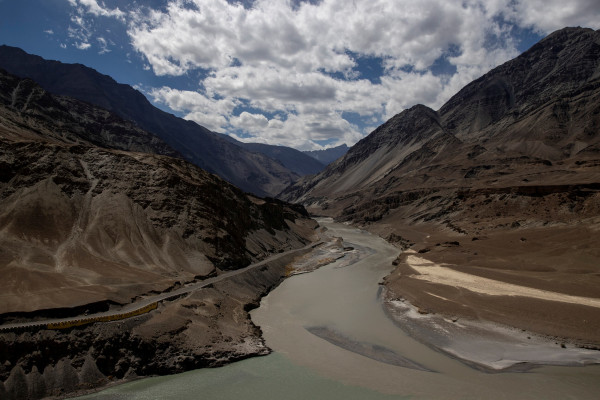India’s heartburn over what it sees as the “injustice” of the Indus Waters Treaty, which divided the waters of the Indus Basin between the former (Ravi, Beas, Sutlej) and Pakistan (Indus, Jhelum, Chenab), has acquired a sharp edge in recent times.
Witness demands in various quarters for tearing up the treaty to redress the “injustice”, meaning a much larger country like India with many more times the population and therefore larger water requirements, having to share water “on an equal basis” with much smaller Pakistan.
It doesn’t help that Pakistan has used every trick in the book to delay run-of-the-river projects that produce power (not store water), that India is entitled to build on the waters flowing into that country. The impression conveyed is that India is the “upper riparian” and therefore out to rob Pakistan of its share of Indus waters.
But the “upper riparian” here is not India, it’s China. According to Britannica, the Indus rises in Ngari Prefecture of the Tibet Autonomous Region of China near Lake Mapam, south of Kailas Mansarovar, at an altitude of 5,500 metres (18,000 feet).
Writing in the Journal of the Institute for Defence Studies & Analysis (Vol 4 No 2, April 2010), Senge Sering, visiting scholar at the institute, notes that “China has built a dam near Demchok, Ladakh, on the River Indus … the dam was located by Alice Albinia a British journalist and author of the book Empires of the Indus, while tracking the source of the Indus.
“Except for hydroelectric installation, the structure which has stopped most of the river flow, is complete. Initially it will generate 11MW of electricity, however given its storage capacity and gradient power generation can reach well over double the initial output.”
Sering quotes experts as warning that the dam threatens the livelihoods of those along the Indus in (Pakistan) Punjab and Sindh, who are heavily dependent on the river for irrigation and energy.
“The tail end of the Indus receives so little water that agriculture in Sindh faces extinction … while Pakistan is building two mega dams of Diamar and Bunji on the Indus in Occupied Gilgit-Baltistan, the Chinese dam will cause water shortage for similar mega hydro projects including the existing Tarbela Dam that also sits on the Indus.”
In other words, Pakistan needs to sit down for a frank chat with its “Iron Brother” on the implications of its dam building on the Indus. It was built without taking Pakistan into confidence, odd behaviour for an “Iron Brother”, but when it comes to its perceived national interest, the Chinese only consult themselves.
Pakistan probably places a higher priority on China’s military and related strategic support vis a vis India, and is seen as unlikely to raise this issue.
For India too, China’s dam on the Indus is a warning. It recently announced plans for a massive dam on the Yarlung Tsangpo in Tibet, which flows into Assam as the Brahmaputra. It may even dam the Sutlej, which is the eastern-most tributary of the Indus, also rises in Tibet and as it enters India through the Shipki Pass in Himachal Pradesh, flows through Punjab giving life and livelihood.
The consensus among China watchers is that Beijing views its “upper riparian” status in strategic terms. It accounts for the absence of any water treaty, either between India and China or between Pakistan and China.
And although little has been heard of China’s dam on the Indus (it’s not clear if it was ever completed), the presence of a structure suggests intent, maybe sometime in the future.
Thirty eight years in journalism, widely travelled, history buff with a preference for Old Monk Rum. Current interest/focus spans China, Technology and Trade. Recent reads: Steven Colls Directorate S and Alexander Frater's Chasing the Monsoon. Netflix/Prime video junkie. Loves animal videos on Facebook. Reluctant tweeter.





